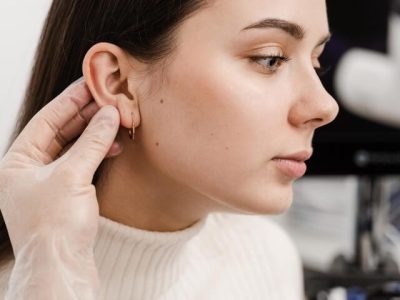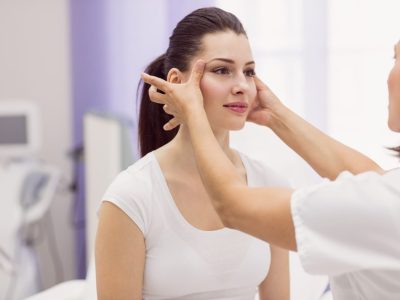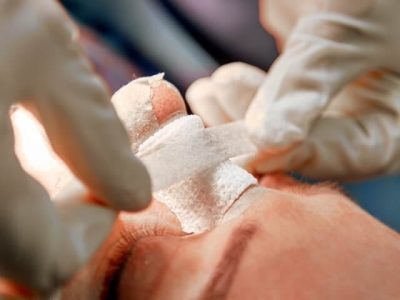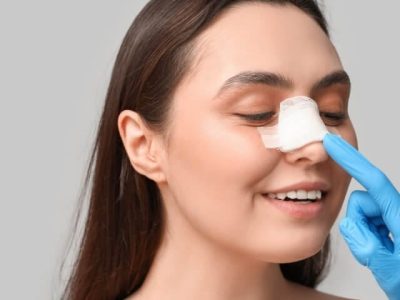Rhinoplasty
Rhinoplasty, commonly known as a “Nose Job”, is a surgical procedure that reshapes the nose to improve its appearance, function, or both. It is one of the most frequently performed facial cosmetic surgeries and can have a profound impact not only on facial harmony but also on breathing quality and self-confidence.
Rhinoplasty is highly individualized and requires a thorough understanding of nasal anatomy, aesthetic proportions, and functional dynamics. Whether the goal is subtle refinement or significant correction, a successful outcome relies on careful planning and surgical expertise.
Why Patients Choose Rhinoplasty
Patients seek rhinoplasty for various aesthetic or functional reasons, including:
- Reducing a prominent nasal hump
- Refining the nasal tip (bulbous, drooping, or asymmetric)
- Narrowing wide nostrils
- Straightening a crooked nose
- Improving overall facial balance
- Correcting a deviated septum and improving breathing
- Repairing congenital deformities or trauma-related injuries
- Revising a previous rhinoplasty (see Revision Rhinoplasty)


Types of Rhinoplasty Procedures
There are several approaches to rhinoplasty depending on the patient’s needs:
- Open Rhinoplasty
Involves a small incision across the columella (the tissue between the nostrils), allowing full visibility and access to the nasal structures. Ideal for complex cases and major reshaping. - Closed (Endonasal) Rhinoplasty
All incisions are made inside the nostrils, leaving no visible scars. Suitable for mild to moderate corrections. - Functional Rhinoplasty
Focuses on restoring or improving nasal airflow and breathing by correcting internal structural problems such as a deviated septum or collapsed nasal valves. - Ethnic Rhinoplasty
Tailored for patients who want to refine their nasal shape while preserving their unique ethnic identity and facial harmony. - Revision Rhinoplasty
A secondary procedure to correct or improve results from a previous rhinoplasty. Often more complex due to scarring or structural changes.
The Rhinoplasty Process
- Initial Consultation
During your consultation, we will:
- Discuss your goals, concerns, and expectations
- Perform a comprehensive nasal and facial analysis
- Evaluate your breathing function
- Review your medical history
- Use imaging or simulation tools to visualize potential outcomes
- Customized Surgical Plan
Every rhinoplasty is tailored to the individual’s unique anatomy, skin thickness, and facial structure. Our goal is to achieve a result that looks natural, fits your face, and preserves or enhances nasal function.
- The Surgery
Rhinoplasty is typically performed under general anesthesia and takes 2–3 hours depending on the complexity. After reshaping the bone, cartilage, and soft tissues, the incisions are closed and a nasal splint is applied for protection and support.


Recovery and Aftercare
- First Week: Bruising and swelling around the nose and eyes are common and begin to improve after 5–7 days. The nasal splint is usually removed around day 7.
- 1–3 Months: Swelling continues to subside. Most people return to normal social and professional life within 2 weeks.
- 12+ Months: Final results become fully apparent after about a year as all internal swelling resolves.
You will receive detailed postoperative instructions to ensure a safe and smooth recovery.
Realistic Expectations
Rhinoplasty can significantly improve facial aesthetics and quality of life, but it’s important to have realistic expectations. The goal is enhancement not perfection. During your consultation, we’ll guide you toward a balanced and natural result that complements your facial features and respects your individuality.
Risks and Considerations
As with all surgeries, rhinoplasty carries some risks, including:
- Bleeding, infection, or scarring
- Nasal asymmetry or irregularities
- Breathing difficulties (rare)
- Need for revision surgery
Choosing an experienced surgeon with expertise in both cosmetic and functional rhinoplasty reduces the likelihood of complications and improves satisfaction. Our goal is to help you look and feel your best.
WHO IS A GOOD CANDIDATE FOR RHINOPLASTY?
To be eligible for rhinoplasty surgery, you must be at least 18 years old. However, in rare medically necessary cases, rhinoplasty may be performed on individuals aged 16 or older, provided there is parental consent.
Beyond age, the most important eligibility criteria are determined during the physical examination and consultation. You should be able to fully understand the surgeon’s expectations, clearly articulate your desired outcome, and comprehensively appreciate potential complications—without overlooking any details. Additionally, there should be no serious health issues that could compromise your safety. These factors will be identified during the preoperative evaluation by the ENT specialist and communicated to you before surgery.
Key Eligibility Highlights
- Minimum age: 18 (or 16–17 in rare medically necessary cases with parental approval)
- Emotional and cognitive readiness: Must fully understand goals, outcomes, and risks
- Health status: No serious comorbidities that jeopardize safety
- Preoperative evaluation: ENT specialist confirms candidacy based on these criteria
RHINOPLASTY TECHNIQUES: WHICH TECHNIQUE SHOULD WE SELECT?
Because the desired outcome is more important than the technique used to perform the surgery. Determining which technique to use is a highly technical decision that requires experience and expertise. In practice, we even combine methods, using techniques across different approaches to create a hybrid procedure tailored to each patient.
WILL THERE BE VISIBLE SCARRING?
Closed rhinoplasty leaves no visible scars; open may leave a tiny scar under the nose that typically fades. Even when thetechniqe wit incision is used, in the long term this incision becomes nearly invisible.
HOW PAINFUL IS RECOVERY AFTER RHINOPLASTY?
You won’t experience significant pain during rhinoplasty surgery, and many patients don’t even use painkillers afterward. However, for the first three days, you may feel a lingering fullness and fatigue, as if you’re recovering from a bad flu.
This sensation usually starts to subside after day two, when internal nasal splints (if used) are removed, and it quickly passes afterward.
HOW LONG UNTIL I LOOK NORMAL AGAIN AFTER RHINOPLASTY?
Swelling and under‑eye bruising in the form of lines may occur during the first 7 days. After the protective nasal splint is removed, these typically rapidly diminish, and within about 3 weeks, you’ll enter a phase where swelling and bruising are no longer noticeable.
WHEN CAN I RESUME SPORTS AFTER RHINOPLASTY?
You can start light sports activities about 14 days after surgery. For contact sports, you should wait 6 weeks. After the 3rd month, you may resume any sport you wish—as long as the nose hasn’t sustained any impact
WILL MY NOSE CHANGE OVER TIME?
After the first year post surgery, your nose will start aging just like the rest of your body undergoing natural age-related changes without any additional changes caused by the rhinoplasty.





